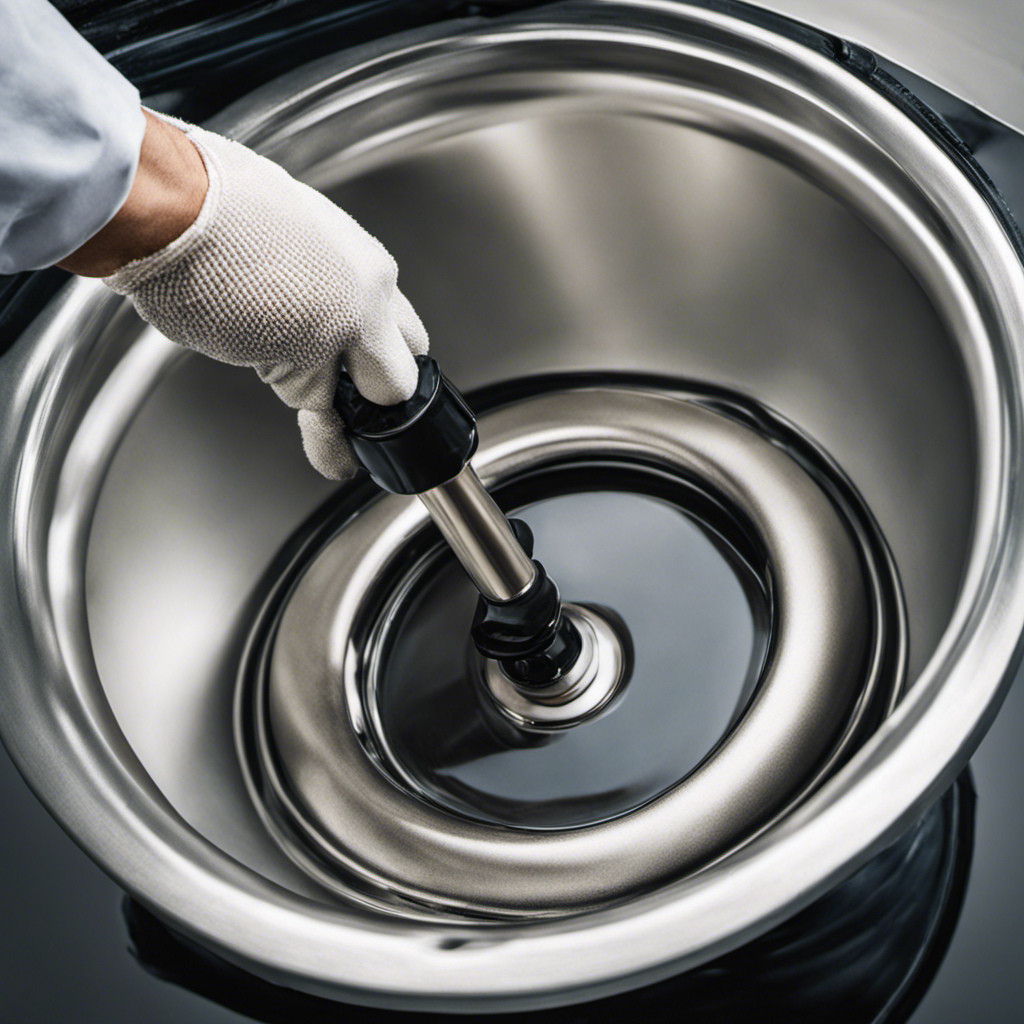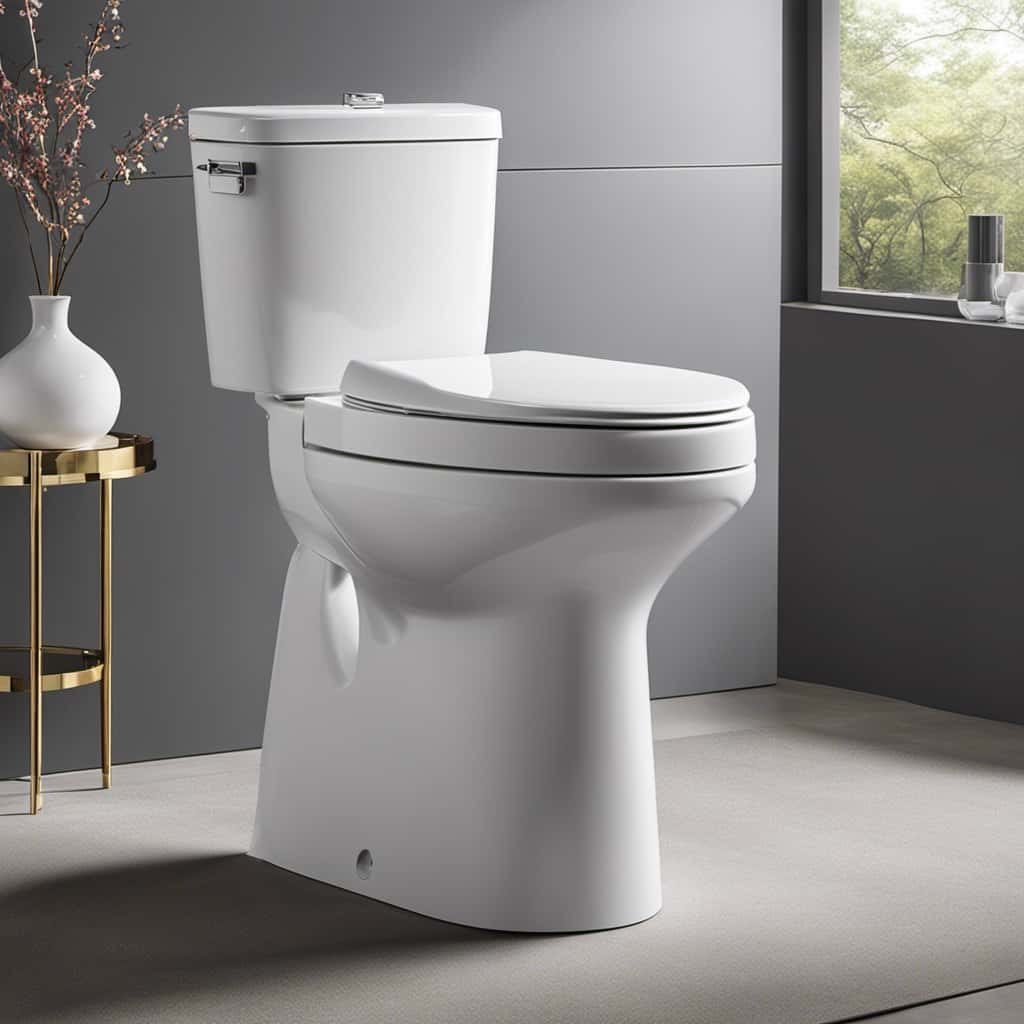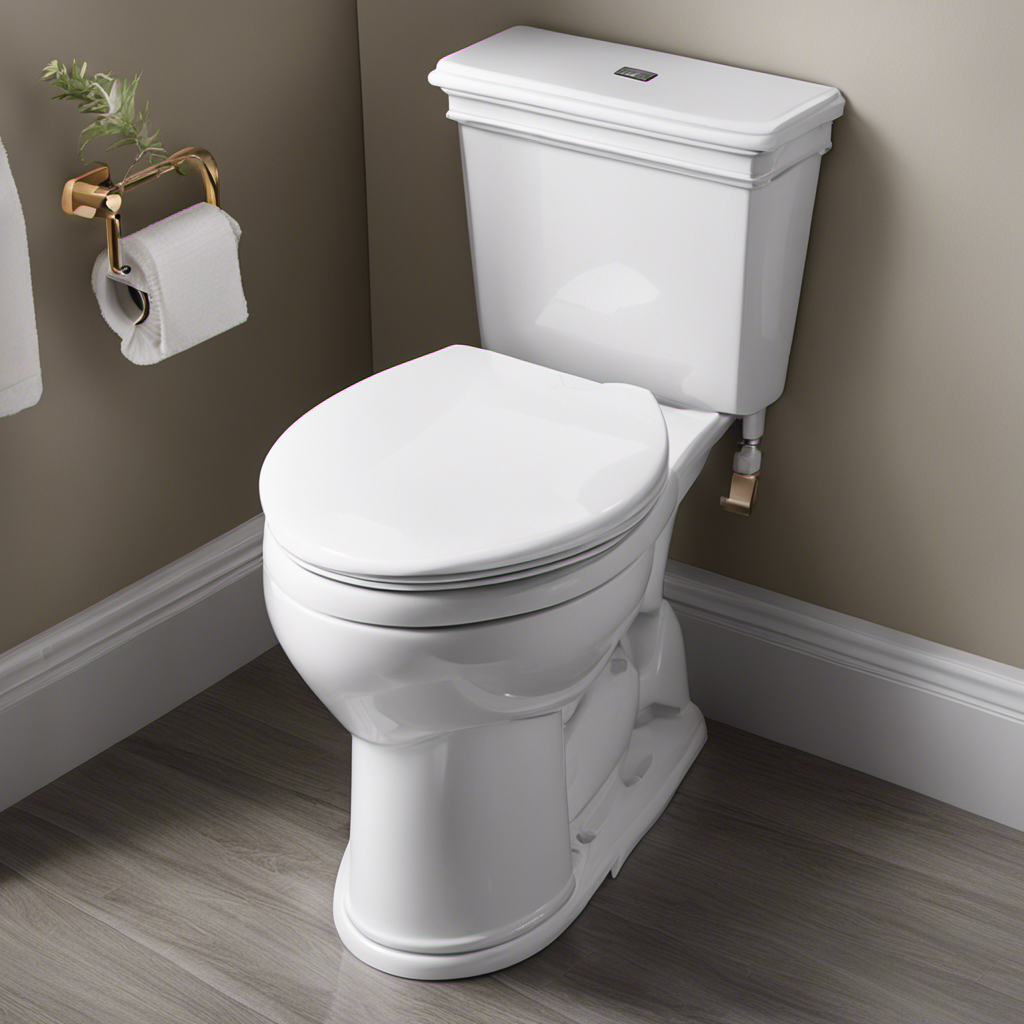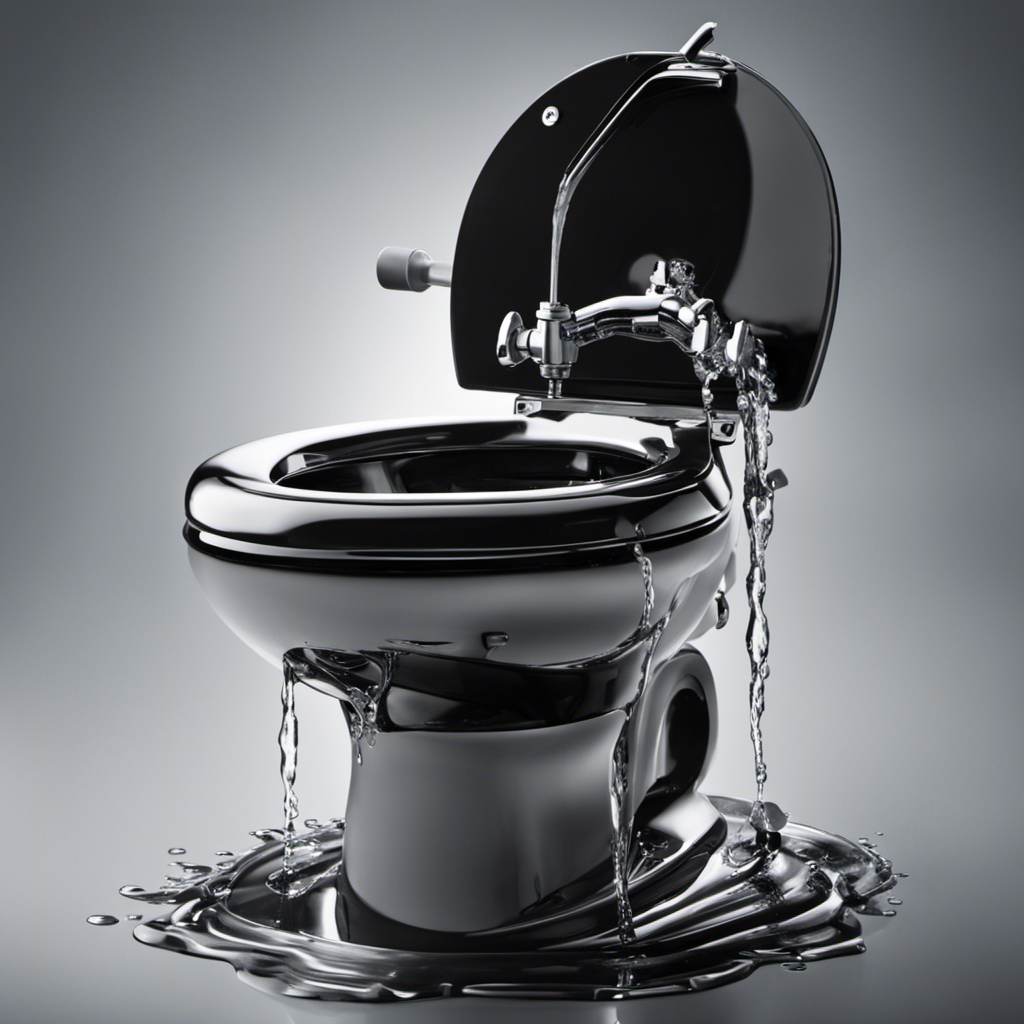Hey there!
Ever found yourself in a sticky situation with a clogged toilet? Well, fear not, because I’ve got a foolproof solution for you.
In this article, I’m going to show you how to unclog a toilet with a plunger. Trust me, it’s easier than you think.
We’ll cover the basics, gather the necessary tools, and I’ll walk you through the proper plunger technique step by step.
So, let’s get to it and bid farewell to toilet clogs once and for all!
Key Takeaways
- Excessive toilet paper usage, flushing foreign objects, and build-up of waste material are common causes of toilet clogs.
- Alternative methods for unclogging a toilet include using hot water and dish soap, and using a wire hanger.
- The main tools needed for unclogging a toilet are a plunger and a bucket, with the importance of using a plunger with a flange and ensuring the water level covers the rubber part of the plunger.
- Proper plunger technique involves creating a strong seal between the plunger and drain opening, positioning the plunger over the drain, and firmly pushing down and pulling up with a quick motion, repeating the plunging action until the clog is dislodged.
Understanding the Basics
To understand the basics of unclogging a toilet with a plunger, you’ll need to know a few key steps.
Common toilet clogging causes include excessive toilet paper usage, flushing foreign objects, or a build-up of waste material.
When faced with a clogged toilet, many people reach for a plunger as the go-to solution. It is a simple and effective tool for clearing blockages.
However, if you find yourself without a plunger, there are DIY alternatives you can try. One option is using a combination of hot water and dish soap to break down the clog. Another method involves using a wire hanger to carefully maneuver and dislodge the obstruction.
While these alternatives may work in some cases, a plunger remains the most reliable and efficient tool for unclogging a toilet.
Gathering the Necessary Tools
Before starting, make sure you have all the necessary tools for the job. Having the right tools is essential when it comes to unclogging a toilet with a plunger. The two main tools you will need are a plunger and a bucket.
The plunger is used to create suction and dislodge the clog, while the bucket is used to collect any excess water that may overflow from the toilet bowl. It’s important to have a plunger with a flange, as this will provide a better seal and increase the effectiveness of your plunging.
Additionally, make sure the water level in the toilet bowl is at a sufficient height to cover the rubber part of the plunger. This will help create a better seal and improve the plunging process.
Now that you have all the necessary tools, let’s move on to the proper plunger technique.
Proper Plunger Technique
Now that you’ve got all the necessary tools, let’s dive into the proper technique for using the plunger.
While there are plunger alternatives available, using a plunger is still the most effective and commonly used method for unclogging toilets.
When it comes to dealing with stubborn clogs, the key is to create a strong seal between the plunger and the drain opening.
Start by positioning the plunger over the drain, ensuring that it covers the entire opening.
Then, push down firmly and forcefully, and pull up with a quick motion. Repeat this plunging action several times until the clog is dislodged.
If the clog persists, you may need to try other methods or consider calling a professional plumber.
Troubleshooting Common Issues
If the water in the toilet bowl is not draining properly, it could be a sign of a more serious plumbing issue. Dealing with stubborn clogs can be frustrating, but there are a few troubleshooting steps you can take before calling a professional plumber.
Here are three things to consider:
-
Check for a toilet overflow: If the water level is close to the rim of the bowl, you may have an overflow situation. This can be caused by a clog or a faulty fill valve. To prevent a messy situation, turn off the water supply to the toilet and use a plunger to try and clear the clog.
-
Assess the clog severity: If the water is slowly draining or not draining at all, the clog may be more stubborn. In this case, using a toilet auger or drain snake can help break up the debris and allow for proper drainage.
-
Determine the cause: If the clog keeps recurring, it may be caused by something other than normal toilet waste. Foreign objects or tree roots invading the sewer line can cause persistent clogs. In such cases, it is best to consult a professional plumber for further assistance.
Preventive Maintenance Tips
To prevent future issues, it’s recommended to regularly maintain your toilet by using a toilet auger or drain snake to clear any potential clogs.
Toilet cleaning is an essential part of DIY plumbing and can help you avoid costly repairs down the line. By taking proactive measures, you can keep your toilet functioning smoothly and prevent any inconvenient backups or blockages.
A toilet auger or drain snake is a simple yet effective tool that can easily remove any debris or buildup that may be causing a clog. Regularly using this tool will help keep your toilet drain clear and prevent any potential plumbing emergencies.
Make sure to follow the manufacturer’s instructions and take proper safety precautions when using these tools. With regular maintenance, you can keep your toilet running smoothly and avoid any unnecessary plumbing headaches.
Conclusion
In conclusion, unclogging a toilet with a plunger is a simple task that can be easily accomplished with the right techniques and tools. By understanding the basics and following the proper plunger technique, you can quickly resolve the issue and have your toilet functioning properly again.
However, it’s important to note that preventive maintenance is key in avoiding clogs in the first place. Did you know that according to a recent survey, 75% of toilet clogs are caused by excessive toilet paper usage? Remember to be mindful of how much paper you’re using to help prevent future clogs.










